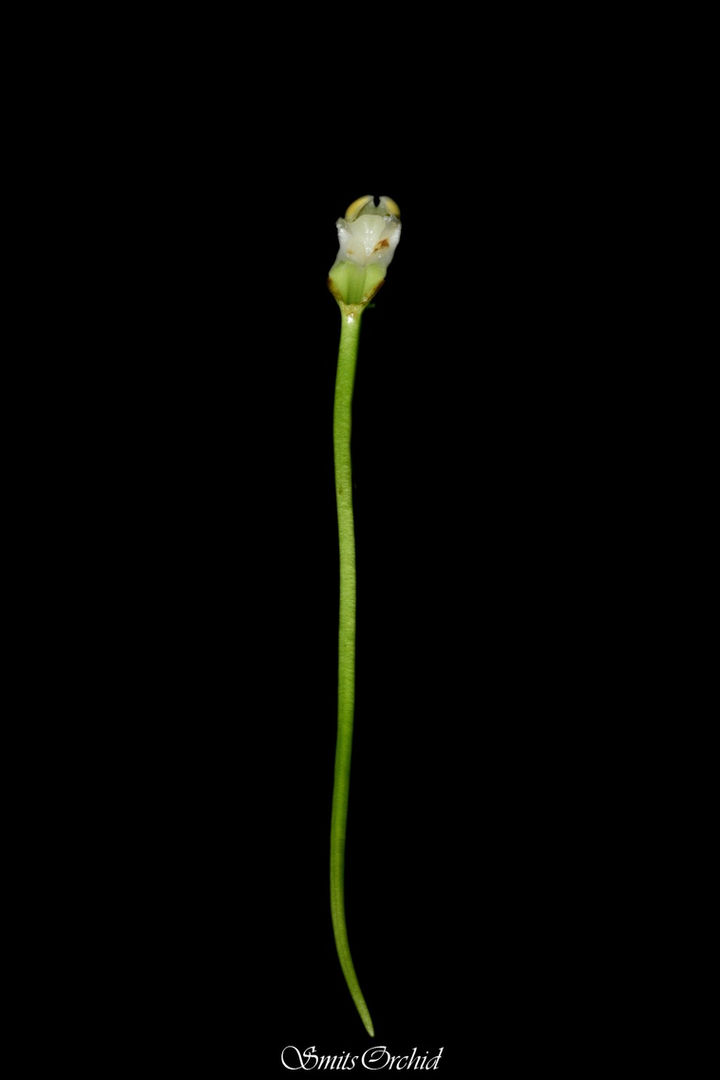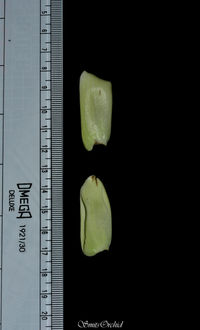
Pecteilis Raf.
Sub family Orchidoideae,
Tribe Orchideae
Sub tribe orchidinae (Habenariinae)
Salient features:
-
Medium to large sized terrestrial herb with large tubers
-
Stem stout leafy
-
Leaves Cauline or in basal three rosette, several ovate, rather fleshy green
-
Inflorescence sparsely or densely flowered
-
Flowers Medium to large sized, showy white or white with yellow lip
-
Sepals & petals entire
-
Petals linear much smaller than sepals; sepals connivant to form hood over column
-
Labellum decurved more or less three lobed , spur at the base, lacking callus, side lobes spreading often fringed, lacerate rarely entire; mid lobe smaller entire; spur pendent, serpentine, straight or U shaped
-
Column erect; anther loculi widely spaced,placed on broad connective
-
Pollinia 2 clavate sectile, viscidia2 ovate oblong concealed
-
Rostellum 3 lobed, sidelobes tapering slightly incurved at apex
-
Stigmas sessile adherent to the base of lip
-
Ovary shortly pedicellate

Pecteilis gigantea (Sm.) Raf.
In Fl. Tellur. 2: 38 (1837)
Habenaria gigantea (Sm.) D.Don in Prodr. Fl. Nepal.: 24 (1825)
Orchis gigantea Sm. in Exot. Bot. 2: 79 (1806)
Platanthera gigantea (Sm.) Vuijk in Orchideeën 27: 132 (1965)
Platanthera gigantea var. doctersii (J.J.Sm.) Vuijk in Orchideeën 27: 134 (1965)
Platanthera susannae var. doctersii J.J.Sm. in Bull. Jard. Bot. Buitenzorg, ser. 3, 9: 27 (1928)
Derivation of name: Name Pecteilis is derived from geek pectein, a comb describing lacerate side lobe of lip & giganteus, giant referring to large flowers
Pecteilis gigantea is ‘largest’ most beautiful fragrant ground orchid

Ecology: Stout terrestrial herbs, 60-140 cm tall, growing under dense shadow of trees on humus rich soil in moist semievergreen forest, Plants are also found growing in open grassland in moist semi ever green & ever green forest

Tubers 2, ellipsoid or ovoid 9x3cm.

Leaves : 5-18 X 2-7 cm, ovate-oblong or oblong-lanceolate, acute, often with a sharp black apex, entire, glabrous, deep green above, paler beneath; sheaths veined, the veins decurrent from the lamina; mid nerve prominent beneath, with 8-10 fainter side nerves,margins faintly yellowish.

Inflorescence : terminal, in 2-6-flowered racemes, 16-20 cm long.

Flowers: 10x7 cm, white faintly tinged with green, bracteate, shortly pedicellate, strongly perfumed especially when freshly opened.
Bracts 6-10 X 1.5-2 cm, longer than and ensheathing the ovary, oblong-lanceolate, subacuminate, often sharply pointed, entire, several-nerved.

Sepals: unequal, white, faintly suffused with green, entire,5-nerved
Dorsal sepal 4.6 X 3.4 cm, revolute on the margins, subconcave, obovate-elliptic, obtuse;
Lateral sepals 4.4 X 1.8 cm, spreading lightly backwards, somewhat ascending, revolute on the margins, obliquely subquadrately oblong, acute.

Petals: 3.4 X 0.4 cm, white, narrowly linear-oblong, obliquely curving along the lower margins to an acute apex.

Labellum: 4.7 X 9 cm, white, fan-shaped in outline; lateral lobe fimbriately dissected into 10-16 thin, narrow, often two partite, 8- 26 X 0.5-1 mm, narrowly linear-filiform segments; midlobe 3.8 x 0.9 cm, recurved at the margins, elliptic, slightly dilated beyond the middle, obtuse.
Spur 8-11.5 cm long, about 3-5 mm in diam., pale green, obtuse; mouth broad.

Column: 7.1 x 1.2 mm, white, oblong, truncate, retuse above. Anther cells 0.4 cm long, curved, divergent;
pollinia 2, each 6 x 2 mm, yellow, narrowly falcate with a 6 mm long, thin caudide and a small, shiny, ovate-elliptic gland.
Stigmatic surfaces 2, almost touching, 5 x 5 mm, just below the rostellum, white, squarely oblong with rounded ends, flat.

Ovary 4.3 xO.7 cm, strongly ribbed, green with 4 yellowish ridges.

Capsule: 4.5 X 1.5 cm, ellipsoid, strongly ribbed; beak 7 rom long.
Flowering: October-November Fruiting: November to December

Threat : Construction of roads through forest and mining are major causea for reducing natural population of this orchid drastically
In addition to this Rodents consume their large tubers for destruction
Grasses are cut for fodder along with that orchid plants are also cut
Tourism is also responsible Flower being attractive & fragrant tourists take away plants plus emission of vehicles is also major threat


























